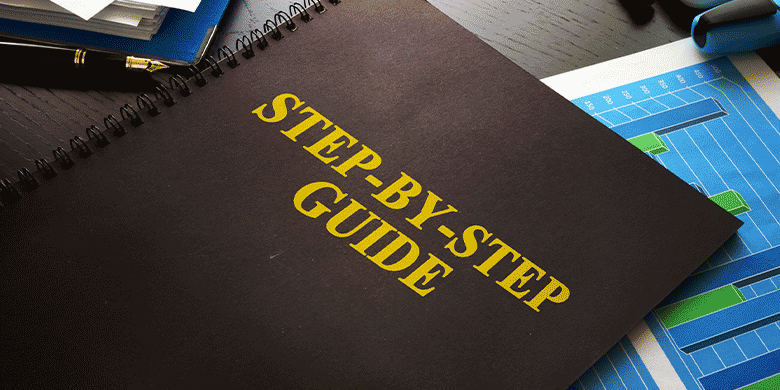
8 December, 2023
A Step-By-Step Guide to Designing Your Own Promotional Umbrella
Designing promotional umbrellas can be exciting, allowing you to merge creativity with functionality while promoting a brand or message. Creating a piece that is visually appealing and effective in conveying your intended message requires a meticulous approach. In this step-by-step guide, we unravel the process of designing your own custom promotional umbrella, offering design tips and highlighting common mistakes to avoid.
Step-By-Step Guide to Designing a Promotional Umbrella
1. Define Your Purpose
Understanding the core purpose is the foundational step in the design process. Here's how you can define your purpose precisely:
- Business Promotion: If the goal is to promote a business, focus on incorporating brand elements such as logos, taglines, and colours that resonate with your company's ethos.
- Advocacy or Cause: Should it represent a cause, ensure that the design effectively communicates the ethos and message of the campaign, using symbols and colours that align with the advocacy.
- Event Specials: When promoting a special event, integrate elements that evoke the event's theme, creating a festive design that indicates what attendees can expect.
2. Choose the Right Umbrella Type
Selecting the appropriate type not only dictates the style but also the utility of it:
- Classic Stick Umbrellas: These offer a large canvas for bold and elaborate designs, ideal for detailed artworks and brand messages.
- Compact, Foldable Varieties: These are convenient and portable, suitable for a target audience always on the go. Considering the smaller canvas space, the design of these should be simple yet impactful.
3. Select High-Quality Materials
Choosing high-quality materials is crucial for the following reasons:
- Durability: Durable materials ensures it withstands adverse weather conditions, promising a long life for your promotional message.
- Appearance: Quality materials lend a polished, sophisticated look, elevating your brand image.
- Sustainability: Opt for eco-friendly materials, showcasing your brand's commitment to environmental conservation wherever possible.
4. Determine the Colour Scheme
A well-thought-out colour scheme can enhance the visual appeal:
- Brand Identity: Stick to colours that are synonymous with your brand, fostering brand recall each time it is used.
- Psychology of Colours: Understand the psychology of colours to evoke desired emotions and connections with your audience.
5. Design Your Artwork
When creating your artwork, consider the following:
- Simplicity with Impact: While the design should be visually appealing, maintaining a level of simplicity will ensure the core message is not lost.
- Functionality: The artwork should not compromise the umbrella's primary function, providing shelter from rain or sun.
6. Logo Placement
Logo placement is critical to branding:
- Visibility: Ensure that the logo is placed in a spot where it's easily visible, capturing attention instantaneously.
- Creativity: Consider creative placements like a continuous, wrap-around design to give a modern and dynamic flair.
7. Include Essential Information
Including essential information requires tact:
- Legibility: Ensure the contact details or website are legible, fostering easy contact and further engagement with your brand.
- Integration with Design: The information should integrate seamlessly with the overall design, maintaining a fluid and cohesive look.
Common Mistakes to Avoid

1) Overcrowding Your Design
Designing a promotional umbrella offers a rich canvas to showcase your creativity, but there is a thin line between a well-detailed design and an overcrowded one. Here are detailed insights on avoiding overcrowding:
- Balance Between Graphics and White Space: Maintaining a harmonious balance between graphics and white space allows for a cleaner, professional appearance. White space can accentuate the main design elements, focusing on the critical aspects of your promotional message.
- Focused Messaging: Streamline the information presented to convey the primary message succinctly and effectively. A concise, focused message has a higher recall than a cluttered information array.
- Test Mockups: Before finalising the design, create mockups to visualise how the design translates on the umbrella. It can help identify areas where reduction or adjustment is needed to avoid overcrowding.
2) Using Low-Resolution Images
Using high-quality visuals is non-negotiable in designing a promotional umbrella. Here's how to avoid the mistake of incorporating low-resolution images:
- Source High-Quality Images: Always source high-quality, high-resolution images that can withstand enlargement without losing clarity.
- Professional Guidance: If unsure about the image quality, seek professional guidance to select visuals that will maintain a crisp appearance in the final output.
- Vector Graphics: Consider using vector graphics for logos and other essential design elements, as they retain clarity regardless of the size.
3) Ignoring the Handle
The handle of the umbrella, often overlooked, can be a strategic point for branding. Here is how you can leverage this space:
- Engraving the Logo: Consider engraving your logo on the handle for a subtle yet effective brand reminder. It offers a touch of personalisation and reinforces brand identity each time it is held.
- Branded Tag: Adding a branded tag to the handle can provide additional space for essential information, such as your website or contact details, facilitating easy reference for potential clients or supporters.
- Complementary Design: Ensuring the handle’s design complements the overall theme can provide a cohesive look, enhancing the aesthetic appeal from top to bottom.
Avoiding common mistakes in the design process is crucial to effectively communicating your message while showcasing a professional and appealing aesthetic. By giving due consideration to each design aspect, including the often-overlooked handle, and focusing on high-quality visuals without overcrowding, you pave the way for a promotional tool that protects users from the rain and prominently and beautifully carries your brand's message to the world.
Budget Considerations

1) Research and Negotiation: Embarking on creating a custom promotional umbrella requires diligent research to identify suppliers offering the best deals without compromising on quality. Furthermore, don't hesitate to negotiate terms to arrive at a cost-effective solution.
2) Versatility over Complexity: While it might be tempting to go for complex designs with numerous features, it often elevates the cost significantly. Opt for a versatile and visually appealing design to ensure a wider reach without escalating the costs enormously.
3) Discounted Rates: Placing orders in bulk often enables you to avail of substantial discounts, making each unit more affordable. Therefore, you should project the approximate number you'll need and order accordingly to benefit from reduced rates.
4) Unified Branding: Bulk orders ensure uniformity in your promotional items, enhancing brand coherence and recognition. Moreover, having a substantial number of them at your disposal means you are ever-ready for various marketing opportunities without facing the hassle of repeated orders and potential inconsistencies in design.
Audience Targeting

1) Demographics
- Market Research: Conduct market research to gather detailed insights into your target audience’s preferences, helping tailor one that resonates well with them. This research could encompass aspects such as preferred colours, styles, and umbrella functionalities that are favoured by different age groups, gender categories, or lifestyle clusters.
- Personalisation: Based on the demographic data acquired, offer personalisation options to create a deeper connection with the audience. For instance, you could offer ones that appeal to a younger demographic with vibrant colours and trendy designs. At the same time, a corporate audience might appreciate sleek, monochromatic ones with a premium feel.
2) Geographic Considerations
- Regional Preferences: Different regions have different weather patterns, significantly influencing the kind of umbrella preferred. Vented canopies might be favoured in coastal regions with high winds to prevent them from flipping. Conversely, a light, easy-to-carry one might be the choice in regions with mild weather conditions.
- Material Choice: The geographic targeting can dictate the choice of materials. Materials with good UV protection and moisture-wicking properties would be ideal for hot and humid climates. A sturdy framework that can withstand snow would be more appropriate for colder climates.
Durability and Functionality

1) Weather Resistance
- Material Selection: The choice of materials goes a long way in determining the umbrella's resistance to adverse weather conditions. Using water-resistant fabrics and UV protection ensures it remains a reliable companion come rain or shine. Choosing fabrics with a proven track record of durability, such as polyester or nylon, might be prudent.
- Structural Integrity: Apart from the fabric, considering the quality of the ribs, shaft, and other structural elements is vital. Opt for corrosion-resistant materials such as fibreglass or stainless steel that promise longevity and can withstand high winds without breaking.
2) Ease of Use
- Opening Mechanism: The ease with it can be opened and closed is central to the user’s experience. Features such as an automatic opening mechanism can add to the convenience, providing a hassle-free operation.
Handle Design: The handle design should facilitate a firm grip, ensuring comfort and control during use. Incorporating ergonomic principles in the handle design could be a thoughtful addition, enhancing the user experience substantially.
Weight and Portability: Creating one that is not too heavy and can be easily carried around or stored in a bag contributes to its ease of use. Consider aspects like the compactness when closed, which would influence its portability.
Production Timeline

1) Lead Time
- Contingency Planning: When setting your production timeline, it is wise to build in buffers for unforeseen delays that might occur during the production process, be it due to material shortages, shipping delays, or other unpredictable factors. This foresight ensures that you meet your deadlines without compromising on the quality of the product.
- Pre-Event Distribution: If they are being created for a specific event, consider the time needed for distribution to the attendees. Aim to have them ready well in advance, allowing ample time for a well-orchestrated distribution that elevates the experience for your audience.
2) Prototype Approval
- Feedback and Revisions: Prototype approval is not just about giving a nod to the initial sample; it is an iterative process where feedback plays a crucial role. Allocate time for a thorough review of the prototype and subsequent revisions to reach a design aligned with your vision.
- Quality Assurance: This stage is pivotal in ensuring product quality. It’s not just about aesthetics but inspecting the functionality, durability, and overall finish. It is an opportunity to ensure that the umbrella meets the established standards before green-lighting mass production.
Conclusion
Designing your umbrella can be rewarding, paving the way for a unique product that stands out in a sea of standard promotional items. By following this step-by-step guide and avoiding common pitfalls, you can create one that serves its protective function and effectively carries your promotional message, rain or shine.
Remember to remain true to your brand identity while letting creativity flow, yielding one that is visually appealing and a strong ambassador of your brand or message. Armed with these tips and insights, you are well on your way to creating a memorable product that resonates with your audience and stands the test of time.
The Umbrellas Only Team
